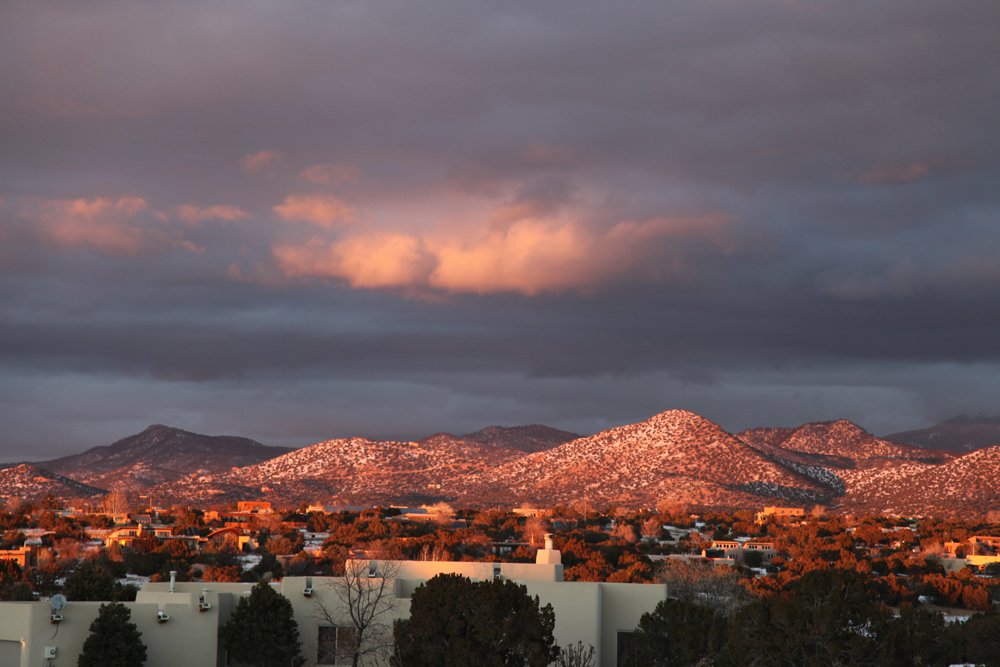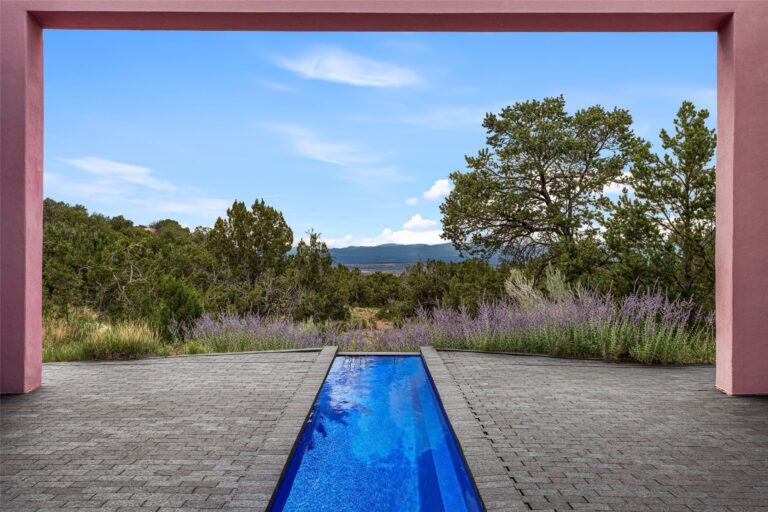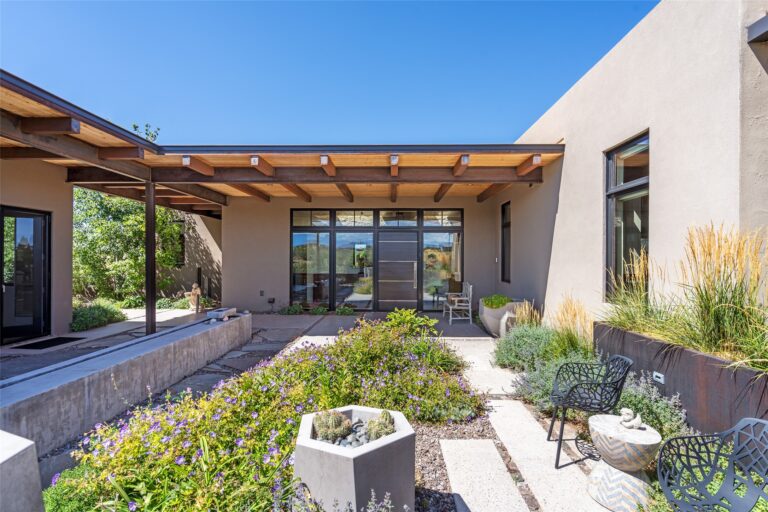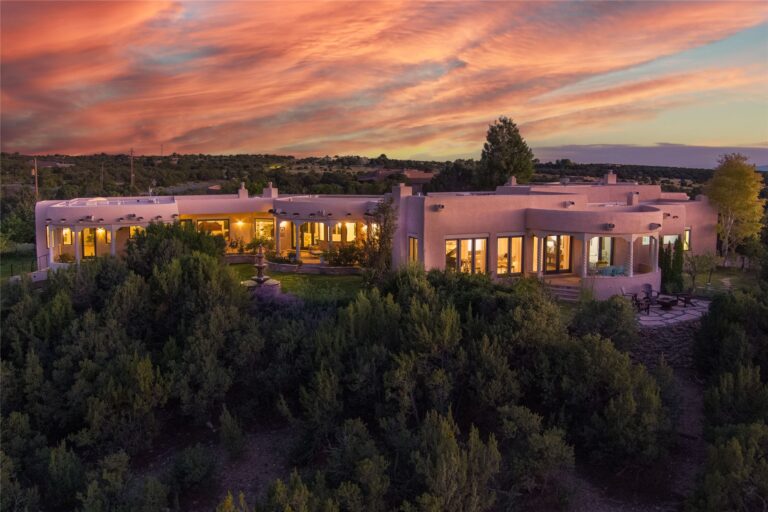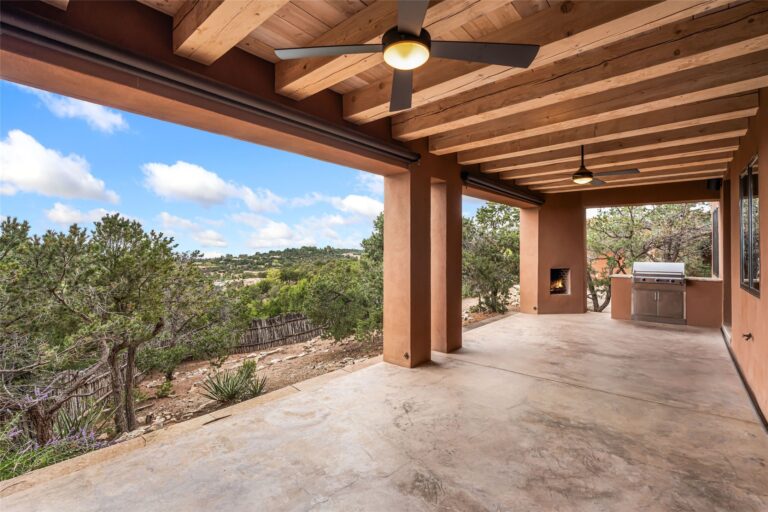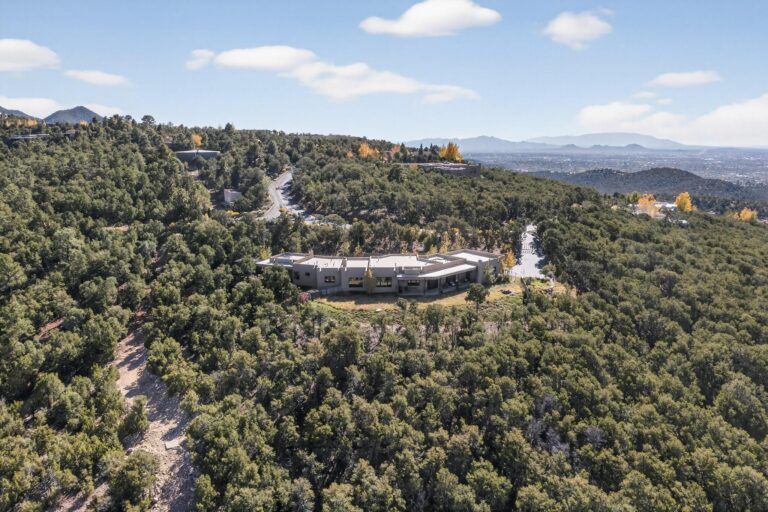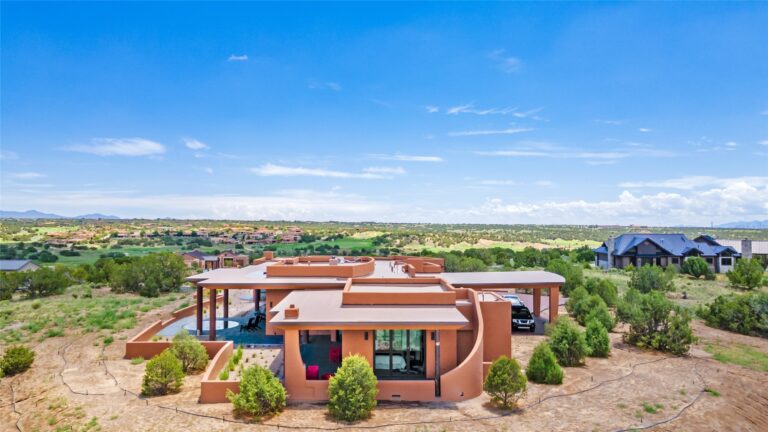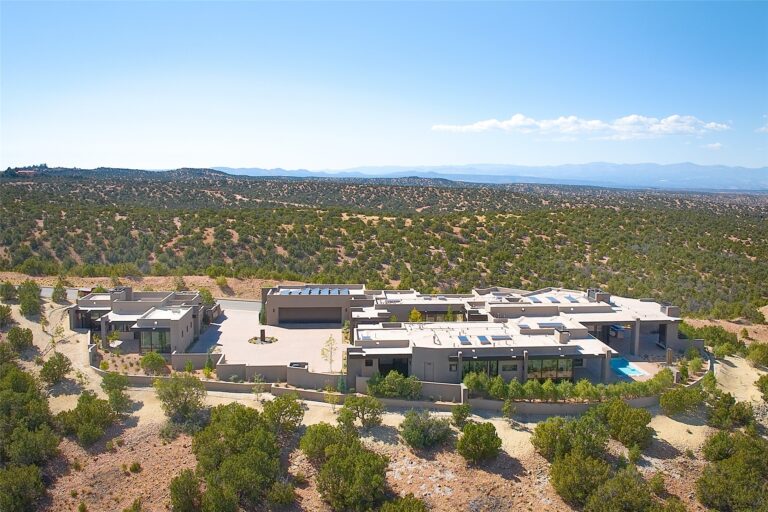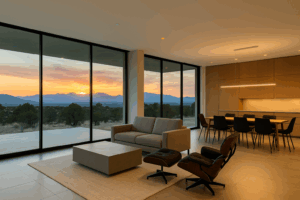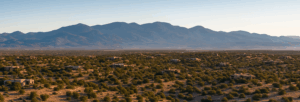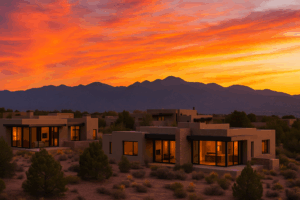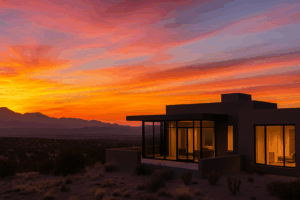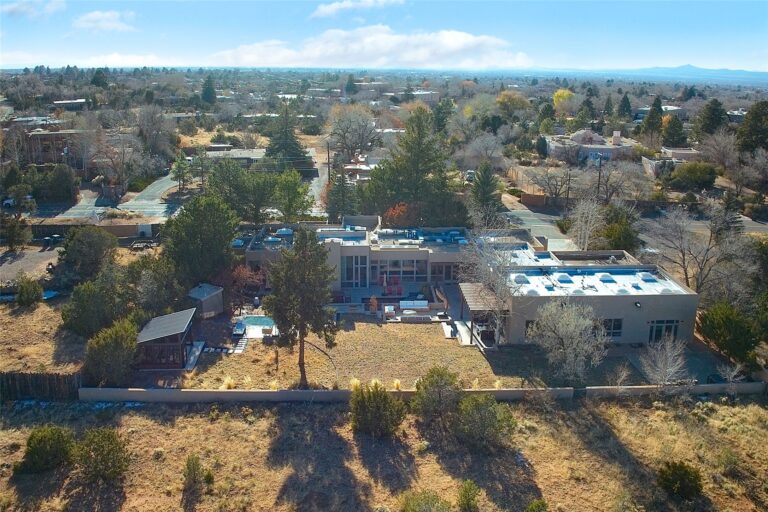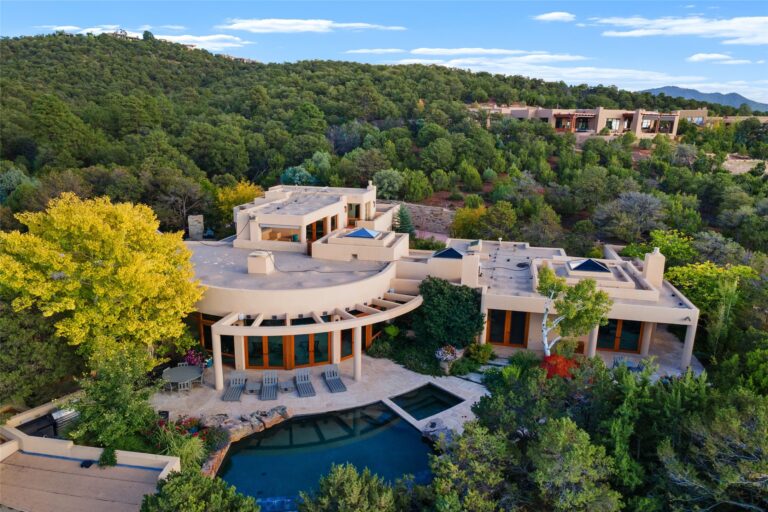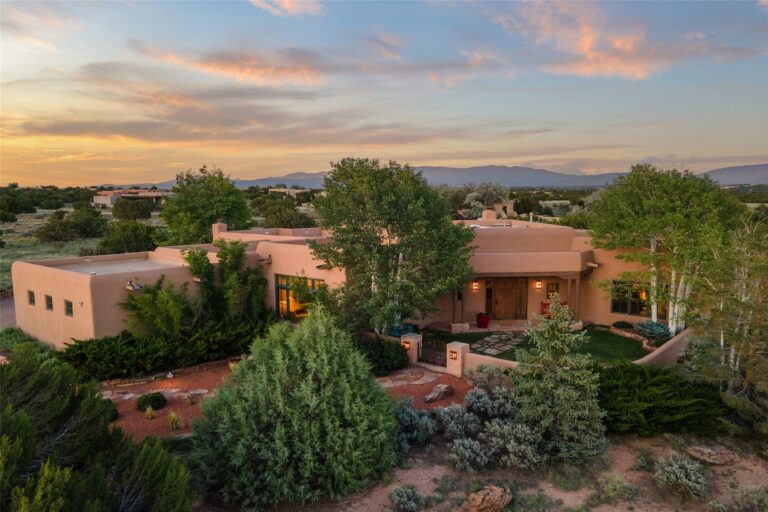Santa Fe’s landscape changes subtly but profoundly through the year. Beyond the classic four seasons, the City Different moves through micro-seasons that only locals truly notice—those brief transitional windows where the desert light shifts, the wind carries a new scent, or a sudden bloom surprises the mountainside. Each of these periods offers a fresh way to experience the city, whether you’re wandering galleries, hiking hidden trails, or simply savoring the feeling of sun on your face in the high desert air.
Late Winter / Early Spring (Mid-February – March): “The Thaw”
This in-between season begins with snow still blanketing the mountains but whispers of spring in the air. Days start to warm, the sun feels stronger, and muddy trails mean the snow is beginning to give way.
The cottonwoods are still bare, but crocuses and early daffodils peek up in protected courtyards, offering a preview of the color to come. Locals know this is the perfect time for snowshoeing in the mornings and hiking in the foothills by afternoon. It’s also a great time to visit the city’s museums without the crowds—places like the Georgia O’Keeffe Museum or the Museum of International Folk Art feel intimate and quiet.
High Spring (April – May): “Greening Season”
Trees bud, the fruit trees bloom, and the earthy scent of thawed soil mixes with piñon smoke from lingering chilly evenings. The wind picks up—sometimes strong enough to feel like nature shaking itself awake.
This is the time when lilacs fill the air, and the city bursts into subtle bloom. It’s one of the most photogenic times in Santa Fe, with adobe walls framed by blossoms and skies that stretch forever. It’s also ideal for plein-air painting, photography walks, and patio dining downtown as more restaurants reopen their outdoor spaces.
Early Summer (June): “The Dry Time”
June is warm, dry, and golden. The city glows in the long evening light, and the mountains are still cool enough for full-day hikes. But locals keep one eye on the horizon for clouds: monsoon season is coming.
This is the best time to explore the city’s vibrant outdoor art scene—from murals and sculpture parks to the colorful street installations that pop up in the Railyard. The Santa Fe Opera season starts ramping up, and visitors can catch a tailgate dinner with a view of the sunset. June also offers ideal conditions for stargazing, with clear skies and low humidity making the Milky Way feel within reach.
Monsoon Season (July – August): “The Sky Show”
Afternoons bring booming thunderheads, dramatic lightning, and sweet-smelling rain. It’s nature’s performance art. The rain nourishes the land, bringing out a second round of wildflowers and turning the hills green.
It’s the kind of season where you can be sunbathing at noon and watching a lightning storm by dinner. Santa Fe’s adobe architecture looks especially vibrant under rain-washed skies—deep oranges, earthy reds, and vibrant turquoises gleam like fresh paint. When the rain rolls in, it’s the perfect excuse to duck into a cozy café, browse artisan shops, or take in an immersive experience like Meow Wolf’s House of Eternal Return.
Late Summer / Early Fall (September – mid-October): “Golden Time”
The aspens begin to shimmer gold in the mountains, and the air turns crisp. This is Santa Fe’s magic hour—warm days, cool nights, and a packed cultural calendar. It’s chile roasting season, and the scent of fire-roasted green chile fills every corner of town—from farmers markets to roadside stands. Events like the Santa Fe Fiesta and the Zozobra burning (where Old Man Gloom is set ablaze) offer a deep dive into local tradition. This is also a perfect time for horseback riding in the foothills or taking a photography workshop to capture the golden hour light that bathes the city.
Mid-Fall (Mid-October – Early November): “The Quiet Shift”
The colors begin to fade, and the nights grow longer. There’s a stillness that settles over town, a preparation for the cold. Smoke curls from chimneys and tamales start to appear on menus again.
Locals love this time for its slower pace—it’s when the tourists thin out and the city exhales. The days are still warm enough for a hike or picnic, but the evenings are made for storytelling around a fire. It’s also an excellent time for wellness retreats, meditation classes, and booking a room at one of the city’s peaceful spa resorts before the winter holidays rush in.
Winter (Late November – February): “The Season of Light & Fire”
Santa Fe embraces winter with a cozy charm. Luminarias line adobe walls during the holidays, the Plaza lights up, and the scent of piñon hangs heavy in the crisp air.
The city’s blend of cultures is most vivid this time of year—Native Pueblo dances, Catholic traditions, and Southwestern customs create a patchwork of celebration. Christmas Eve on Canyon Road, lit only by thousands of farolitos (small paper lanterns), is a magical and deeply local experience. And when snow blankets the city, the contrast between white rooftops and warm adobe walls is picture-perfect—like walking through a living postcard.
A Final Word
To truly know Santa Fe is to pay attention to the transitions—when the wind shifts, when the flowers bloom twice, when the sun hangs low in a clear blue sky. It’s a place that rewards slow observation and seasonal rhythms. So, whether you’re here for a week or a lifetime, let the land set the pace—and don’t forget to look up.
Each season calls forth a different version of the city, and perhaps, a different version of you. Come with an open heart, a curious eye, and a willingness to let time stretch and soften. In Santa Fe, the seasons aren’t just weather—they’re invitations.

